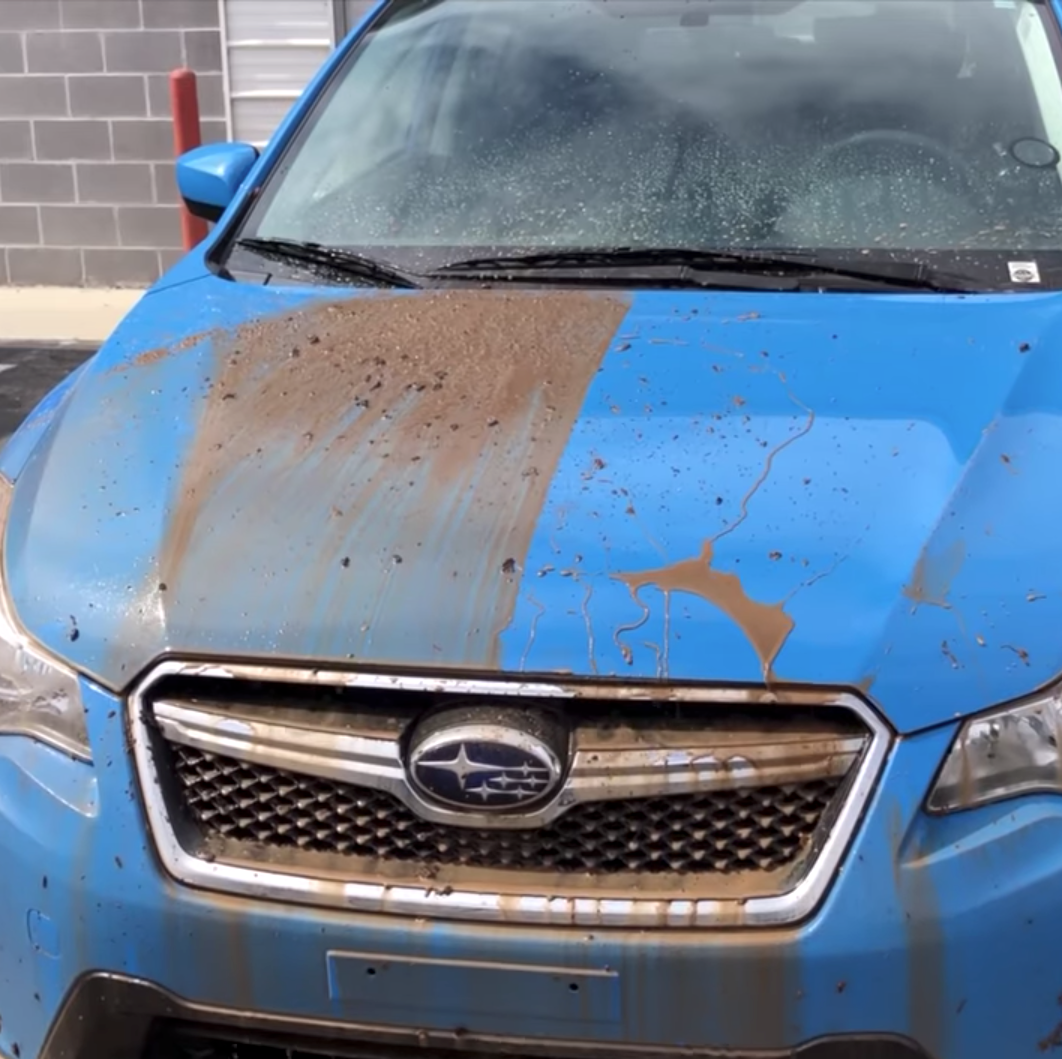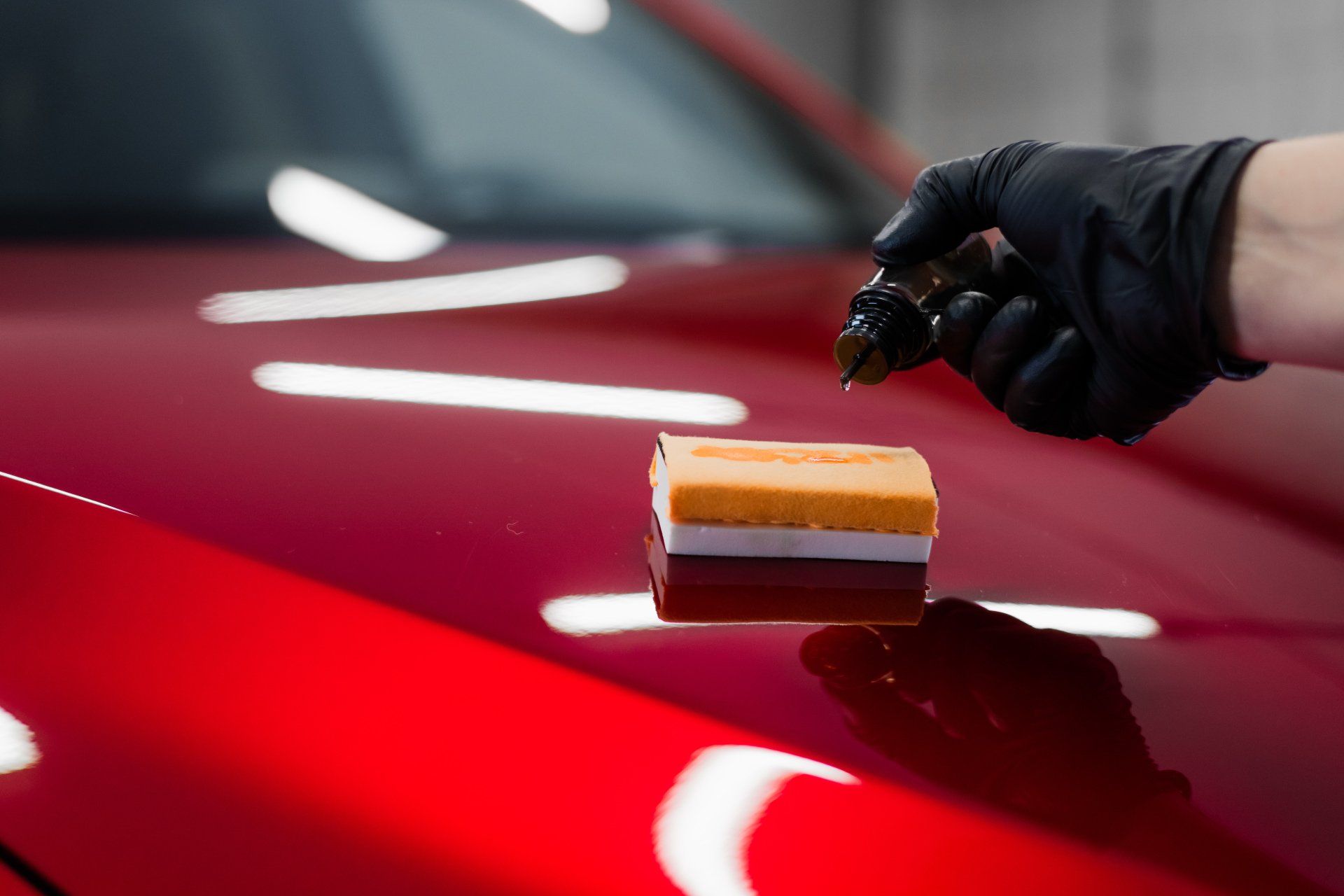Exploring the Scientific Research Behind Car Ceramic Coating and Its Safety Properties
The science of car ceramic coating provides an interesting research in sophisticated auto security. Made up mainly of silicon dioxide and polymers, these coverings form a durable bond with vehicle paint. This communication improves resilience against ecological threats while supplying hydrophobic benefits. The ins and outs of just how these layers job and their lasting benefits stay less understood. Ceramic Coating Newark. Unpacking these information discloses why ceramic layers are coming to be a recommended option for car care
What Is Ceramic Coating?
Ceramic coating is a liquid polymer that chemically bonds to the surface area of a lorry's paint. This innovative safety layer enhances sturdiness and uses remarkable resistance to ecological elements. Unlike conventional wax or sealers, which provide momentary protection, ceramic layers create a lasting guard that can withstand rough conditions such as UV rays, acidic contaminants, and severe weather condition. When applied correctly, the coating creates a hydrophobic surface, triggering water to grain and slide off, which helps in keeping the car's cleanliness. In addition, it provides boosted gloss and deepness to the paint, making the vehicle show up more sleek and dynamic. The application procedure generally includes comprehensive surface area prep work, including cleaning and sprucing up, to guarantee peak bonding. Therefore, ceramic layers are coming to be significantly preferred amongst car fanatics and those looking for to protect their financial investments, guaranteeing to maintain the car's aesthetic charm while lowering the regularity of maintenance.
The Structure of Ceramic Coatings
The intricate formulation of ceramic coverings mainly contains silicon dioxide (SiO2), which is originated from all-natural resources like quartz and sand. This key element supplies the structure for the coating's resilience and safety top qualities. In addition to SiO2, ceramic finishings usually include different polymers and additives that boost attachment, versatility, and resistance to environmental aspects. These compounds function synergistically to develop a robust barrier versus pollutants such as dirt, chemicals, and UV rays.Furthermore, some formulations include titanium dioxide (TiO2) or other nanomaterials, which can enhance the coating's hydrophobic buildings, causing enhanced water repellency. The precise composition can vary greatly among producers, impacting efficiency and longevity. Eventually, the combination of these aspects finishes in a safety layer that not just improves the aesthetic allure of lorries yet likewise serves to lengthen their lifespan by securing the surface from potential damage.
How Ceramic Coatings Job
Understanding just how ceramic coverings work involves discovering their chemical make-up, which adds to their safety high qualities. The application process is necessary for achieving ideal results, while longevity and resilience factors identify the coating's effectiveness over time. With each other, these components highlight the advantages and performance of ceramic coverings for automobile defense.
Chemical Composition Explained
While numerous car proprietors look for long-lasting security for their lorries, the chemical composition of ceramic layers plays an important duty in their efficiency. These coatings primarily are composed of silicon dioxide (SiO2), which is acquired from natural minerals. This compound forms a strong bond with the vehicle's paint, developing a durable, protective layer. In addition, lots of ceramic coatings contain titanium dioxide (TiO2), improving their hydrophobic buildings and resistance to UV rays. The existence of polysiloxanes can better enhance adaptability and sturdiness. Together, these elements add to the coating's ability to push back water, dirt, and pollutants, while additionally offering a high-gloss surface. Understanding this chemical foundation aids car owners value the robust defense used by ceramic coverings.
Application Refine Review
Using ceramic coverings includes a careful procedure that guarantees excellent bonding and defense for the automobile's surface. Initially, complete cleansing and decontamination of the car's outside are carried out to get rid of dust, crud, and previous waxes. This step confirms that the surface is without contaminations that might impede adhesion. Following this, the paint is commonly brightened to improve quality and remove any imperfections. As soon as prepared, the ceramic coating is used in little sections making use of an applicator pad, enabling consistent coverage. The coating is then entrusted to treat, forming a strong chemical bond with the surface area. Correct treating times and problems are critical, as they confirm the coating attains its maximum performance and safety qualities.
Longevity and Resilience Aspects
Ceramic layers are developed to offer long-lasting defense through their sophisticated chemical structure, which creates a durable obstacle against ecological impurities. The toughness of these coatings is affected by aspects such as the thickness of the application, the high quality of the item, and the conditions under which the car is revealed. Top notch ceramic layers can last numerous years, withstanding scrapes, UV rays, and chemical spots. Correct upkeep, including regular cleaning and periodic reapplication, can even more enhance longevity. Additionally, ecological factors like climate and exposure to contaminants can impact the lifespan of the coating. Generally, when applied and kept properly, ceramic coverings provide extraordinary sturdiness, making them a preferred look at here now option for car lovers looking for to protect their lorry's look.
Hydrophobic Properties and Water Repellency
Hydrophobic residential properties are a hallmark of quality car ceramic coverings, substantially boosting the car's surface performance. These layers produce a molecular bond with the car's paint, resulting in a surface area that wards off water effectively. When water enters contact with a ceramic-coated surface, it grains up and rolls off, decreasing the quantity of liquid that stays on the paint. This actions not only contributes to a cosmetically pleasing look yet additionally minimizes the buildup of pollutants such as dust, gunk, and road salts.The enhanced water repellency brings about easier cleansing and upkeep, as less initiative is required to eliminate unwanted materials. Furthermore, the hydrophobic nature of ceramic layers aids in stopping water places, which can mar the surface of uncoated surface areas. Overall, the consolidation of hydrophobic residential properties in ceramic coverings plays a necessary role in preserving the car's excellent appearance while simplifying maintenance.
Defense Against Scratches and UV Damage
Car ceramic finishes More about the author use substantial defense against scrapes and UV damages. The scrape resistance device creates a durable layer that soaks up effects, while the UV protecting benefits assist keep the automobile's paint stability over time. With each other, these attributes add to a longer-lasting and visually appealing finish.
Scrape Resistance Mechanism
Making use of sophisticated technology, ceramic finishings offer a durable shield against scratches and UV damage, boosting the durability and appearance of lorry surfaces. The scrape resistance system of these layers is credited to their unique molecular structure, which develops a resilient bond with the car's paint. This bond develops a hard, protective layer that can soak up impacts and withstand abrasions. Additionally, the smooth surface of the coating reduces rubbing, making it hard for impurities to adhere and create scrapes. The chemical structure of ceramic finishes often includes nanoparticles that reinforce the protective layer, additional boosting its durability. Automobiles treated with ceramic coverings exhibit considerably improved scrape resistance contrasted to traditional wax or sealants, making sure a beautiful surface over time.
UV Protecting Perks
The safety top qualities of ceramic layers extend beyond scratch resistance to include substantial UV securing benefits. These layers produce a robust obstacle that mirrors hazardous ultraviolet rays, protecting the car's paint and underlying products. Long term exposure to UV radiation can lead to fading, oxidation, and deterioration of the paint surface. By incorporating ceramic finishings, lorry owners can efficiently minimize these risks, protecting the visual allure and stability of their cars. In addition, the UV obstructing residential properties check my source add to improved durability, reducing the frequency of repainting and maintenance. Ultimately, the assimilation of ceramic coverings provides a detailed solution for securing automobiles from the destructive impacts of sun direct exposure, making certain a sustained, dynamic appearance in time.
The Durability and Maintenance of Ceramic Coatings

Often Asked Inquiries
Can Ceramic Coating Be Applied to Any Type Of Kind of Lorry?
Ceramic coating can be applied to various kinds of automobiles, consisting of cars and trucks, vehicles, and motorcycles. Nonetheless, surface area prep work and compatibility with certain products are necessary for ideal attachment and effectiveness of the coating.
Just How Much Does Ceramic Coating Generally Expense?
Ceramic coating typically costs in between $500 and $2,000, depending upon elements such as car size, coating top quality, and professional application. The financial investment can provide resilient security and boost the vehicle's look gradually.

Is Professional Application Required for Ideal Results?
The necessity of expert application frequently depends upon desired outcomes. Professionals typically guarantee proper surface area preparation and application methods, resulting in excellent bonding and long life of the coating, which may be testing for inexperienced individuals to attain.
Can Porcelain Coatings Be Gotten Rid Of or Repaired?
Ceramic finishes can be gotten rid of or repaired, though the process may need particular solvents or methods - Ceramic Coating Newark. Appropriate removal is important to stay clear of damages to the underlying surface area, highlighting the significance of specialist support for perfect results
How Does Porcelain Coating Contrast to Traditional Wax?
The contrast in between ceramic coating and conventional wax exposes that ceramic finishings offer premium durability, improved security against environmental impurities, and longer-lasting sparkle, while wax requires more constant application and provides less total resistance to damages.